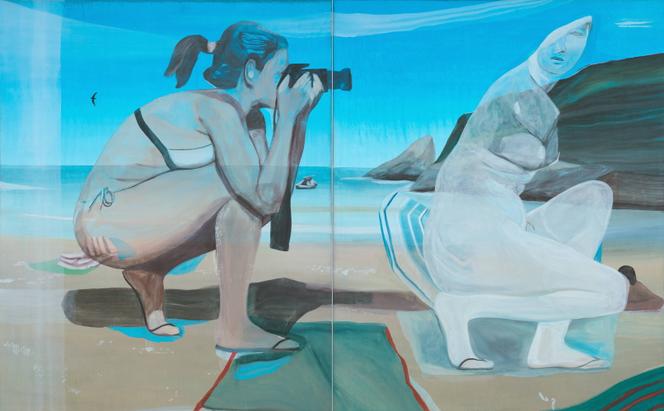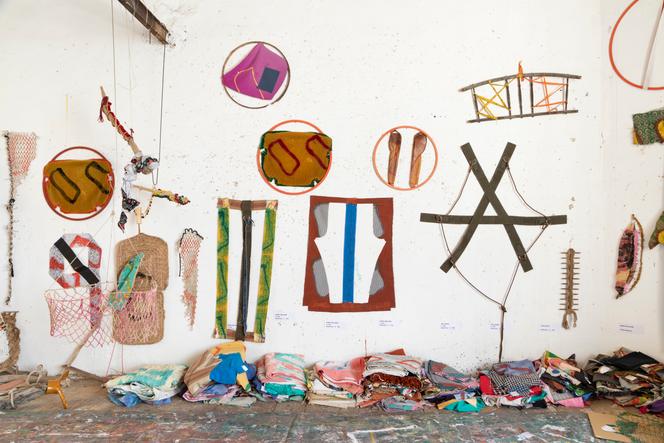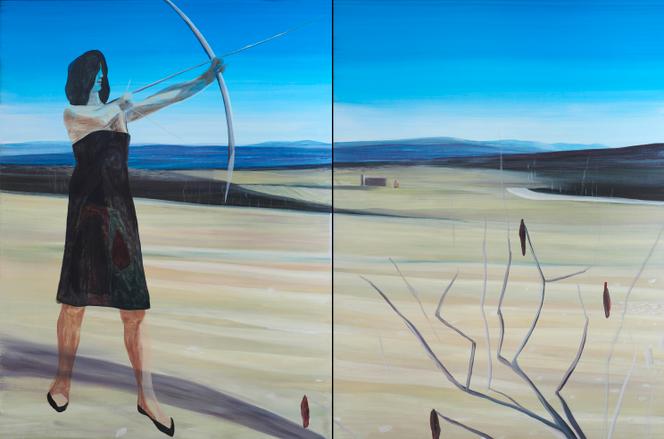


In the first part of 2024, visitors will get a chance to admire famous paintings by Henri Matisse and Jan Van Eyck, visit retrospectives devoted to Ellsworth Kelly and Jean Hélion and learn more about the Mexica civilization or Tintin's relationship with his friend Tchang.

Born in the southern French city of Nîmes in 1936, Claude Viallat was one of the pillars of the group Supports/Surfaces, of which he was a founding and undoubtedly one of the most inventive members. At 87, he is still proving it with his recent works (roughly encompassing the last 10 years) exhibited at the Carré d'Art in Nîmes. These paintings bear the hallmark of a great colorist, while his sculptures and assemblages seem inspired by games and his craftworks are made with next to nothing, sometimes simple bits of string, but turn out to be tremendously complex and supremely elegant: The critic and philosopher Yves Michaud compared them to the creations of a Navajo sorcerer, and one might also be reminded of the "string figures" of the Canadian Arctic's natives. It's an artic style that is at once prehistoric and entirely of our time. Ha. B.
"Claude Viallat. And Yet If..." at the Carré d'Art, Musée d'Art Contemporain de Nîmes. Until March 3.

Following the version presented by Dijon's Musée des Beaux-Arts last summer, this is the second stage of an exhibition centered on the last two decades of the work of the painter Marc Desgrandchamps, born in 1960. At the Musée d'Art Contemporain de Marseille, his canvases can be seen from a different angle, hung lower and in such a way as to find a rhythm in their harmonies and ruptures. The discord is particularly true of his works that can only be defined as deeply disturbed landscapes. There may be a sky, a ground and, often some perspective, but their space is criss-crossed by inexplicable colored lines, the surface tattooed with no less incongruous stains and these dreamlike places inhabited by incomplete beings. The references to ancient art that can be spotted here and there are naturally employed with as much freedom and disrespect as reality. Ph. D.
"Marc Desgrandchamps, Silhouettes" at the Musée d'Art Contemporain de Marseille. Until March 31.

The least you can say is that the Musée de l'Orangerie is not afraid of paradoxes. This temple to colorful effusion, of which Claude Monet is the high priest and his Water Lilies the enchanted celebration, will soon host the work of New Yorker Robert Ryman (1930-2019). Ryman is known as the artist who, from the early 1960s onward, devoted his every experiment to white, whose every nuance of density, mattness and light he explored. He used it in bold strokes and impeccably smooth flat tints. Hence why he is widely regarded as the archetypal minimalist painter, letting us observe only the creative process itself, stripped of all visual reference and emotion. But is this really so? Aren't there other ways of looking at a Ryman white as a blinding glare or a transporting illumination? Whatever the case may be, this will be the first time since his death that we'll be able to contemplate such a large sample of the work of an artist who became legendary for his asceticism. Ph. D.
You have 90% of this article left to read. The rest is for subscribers only.
